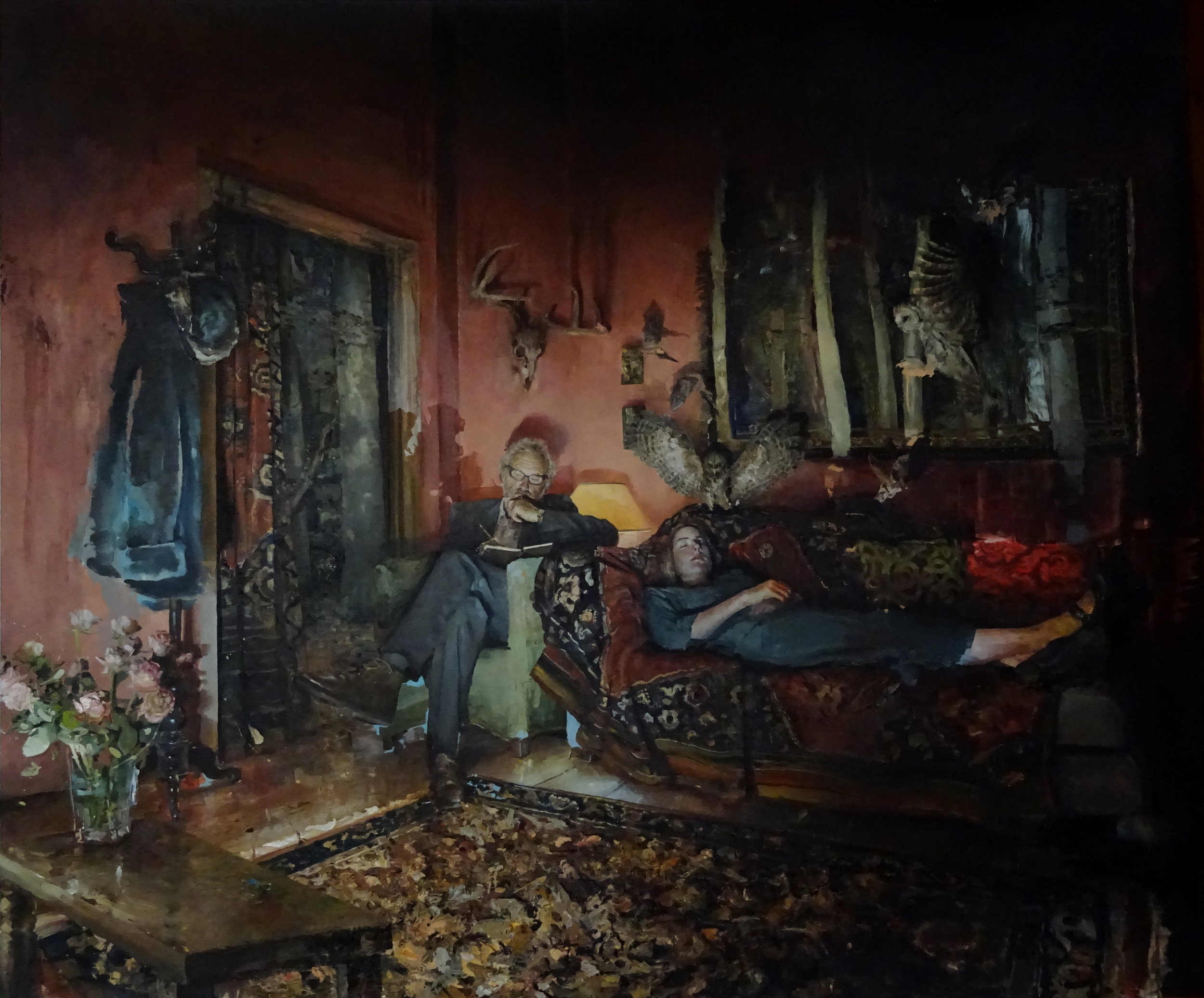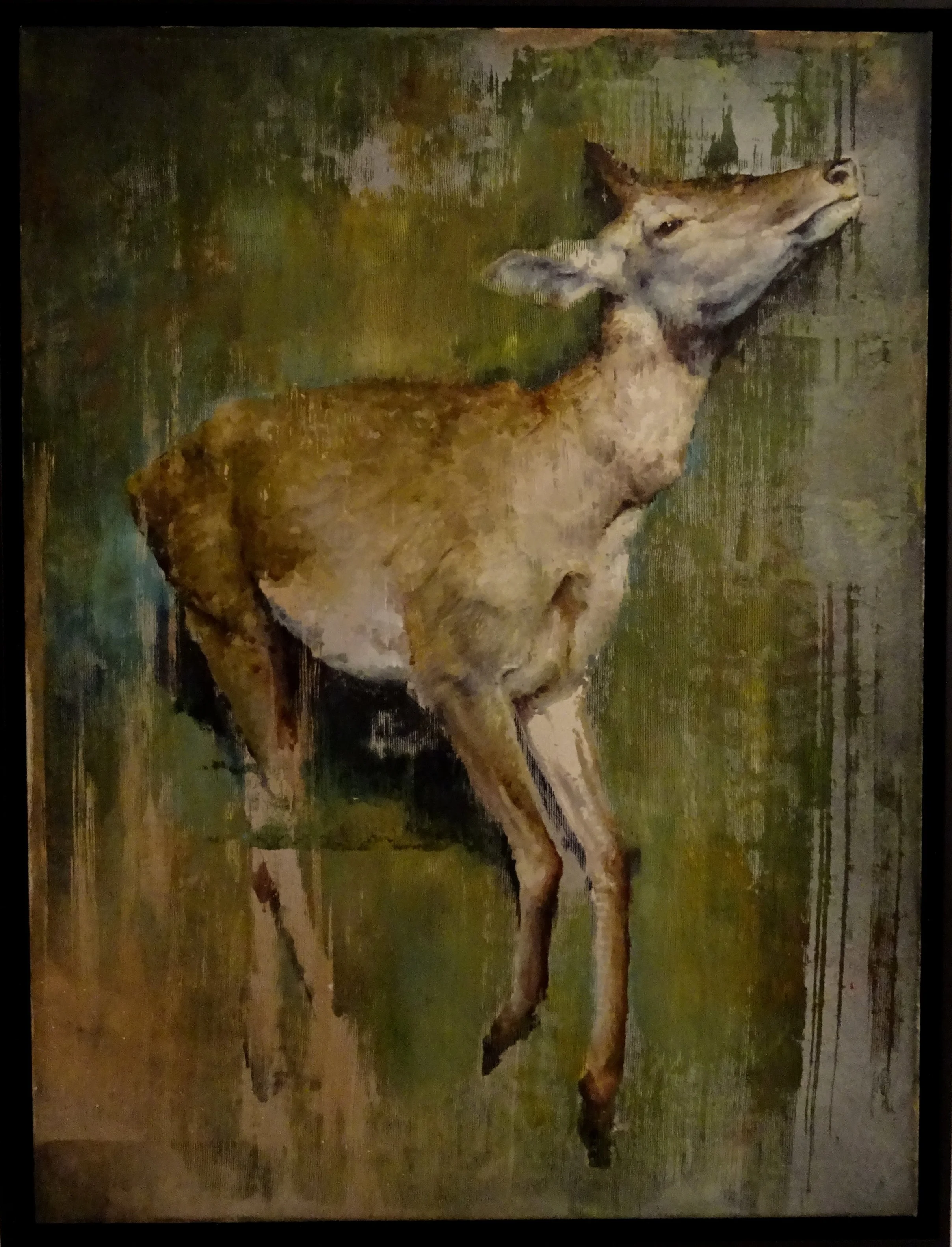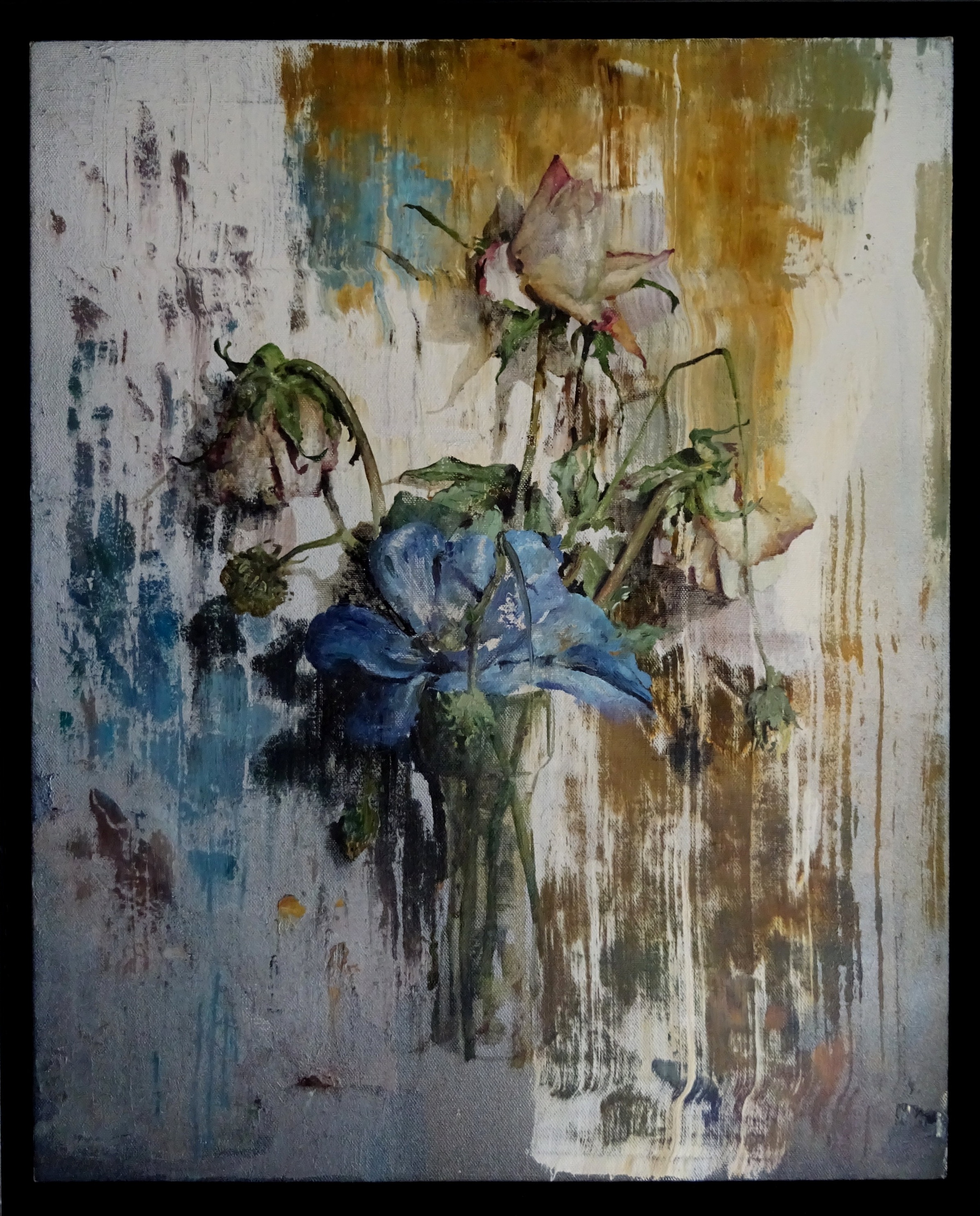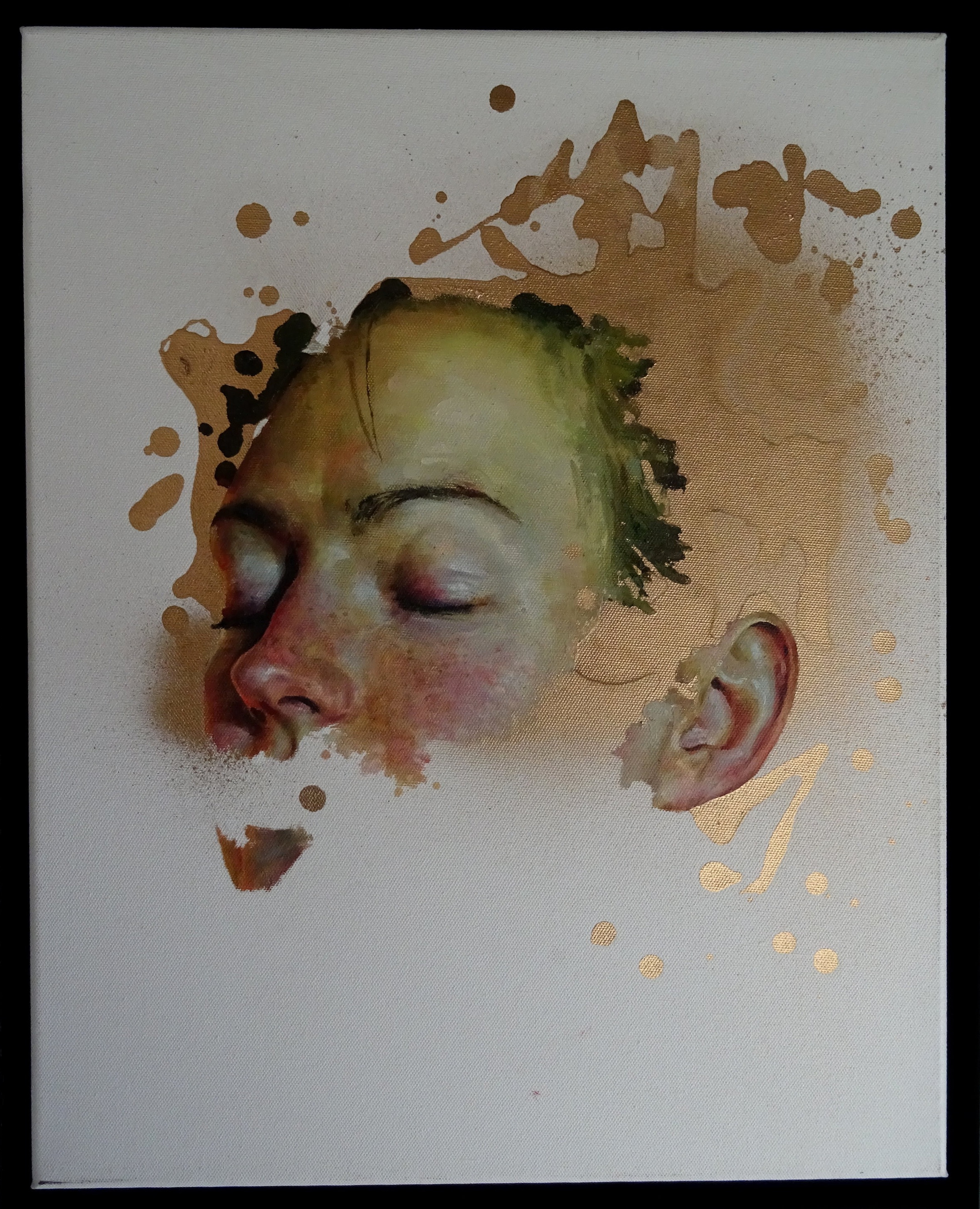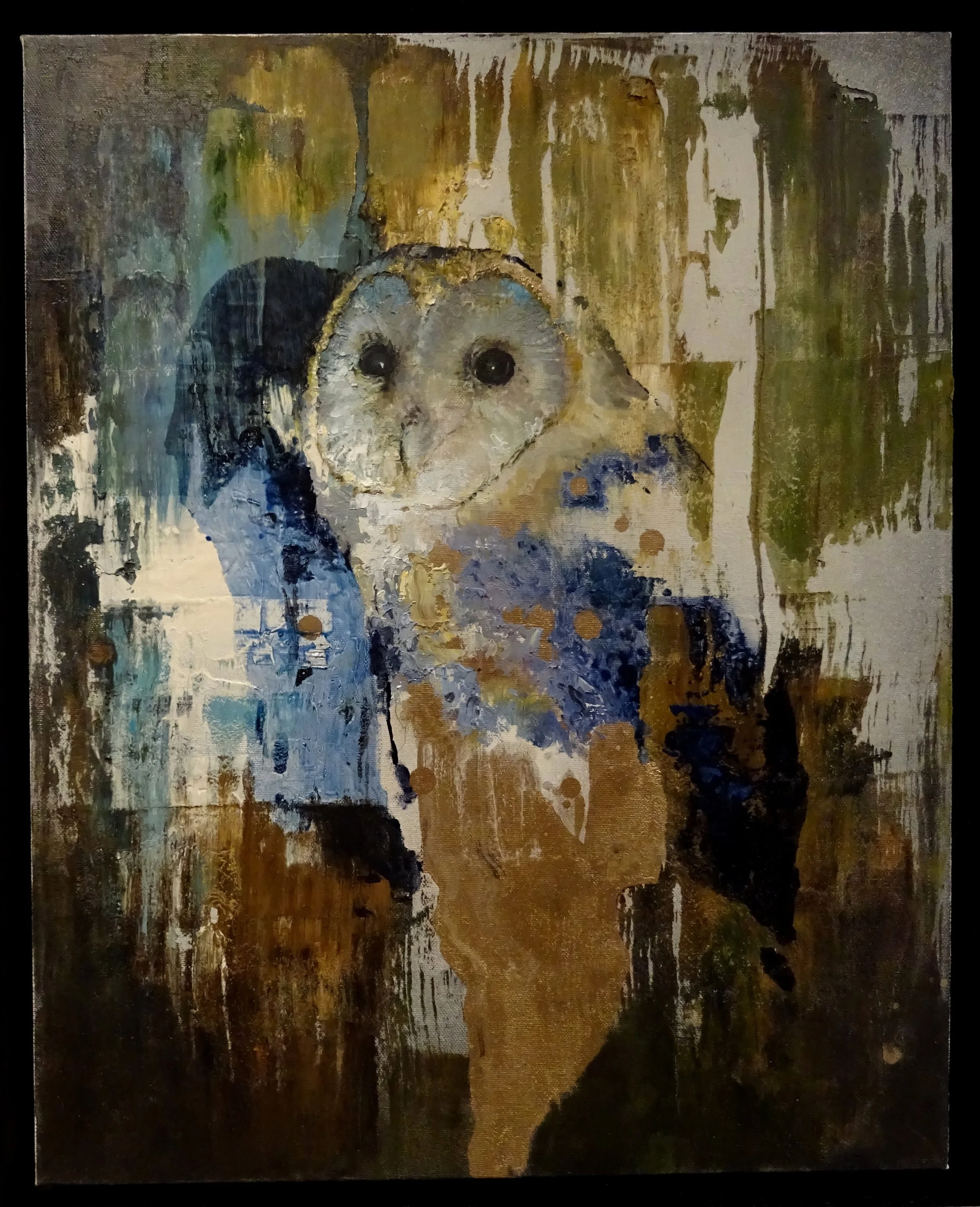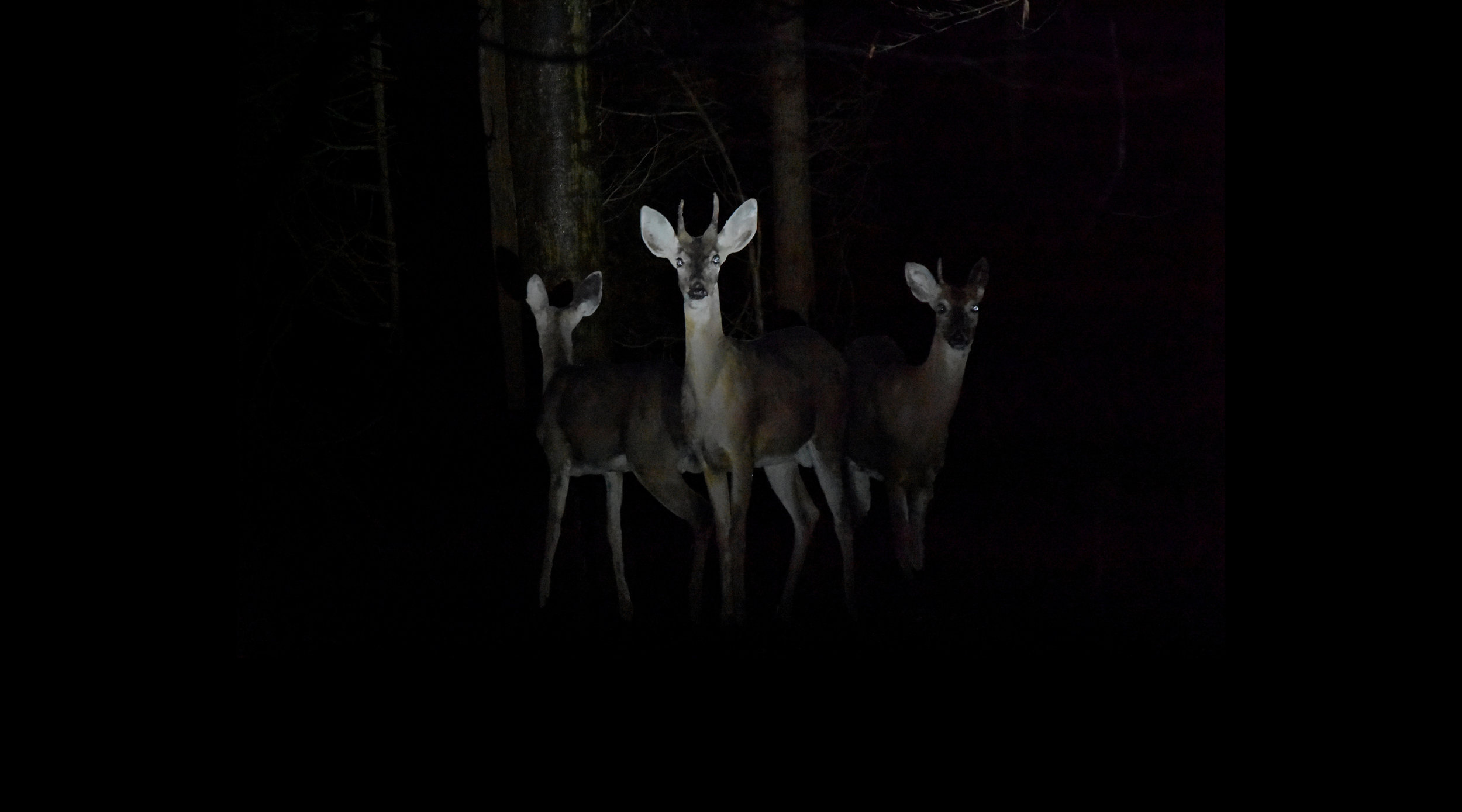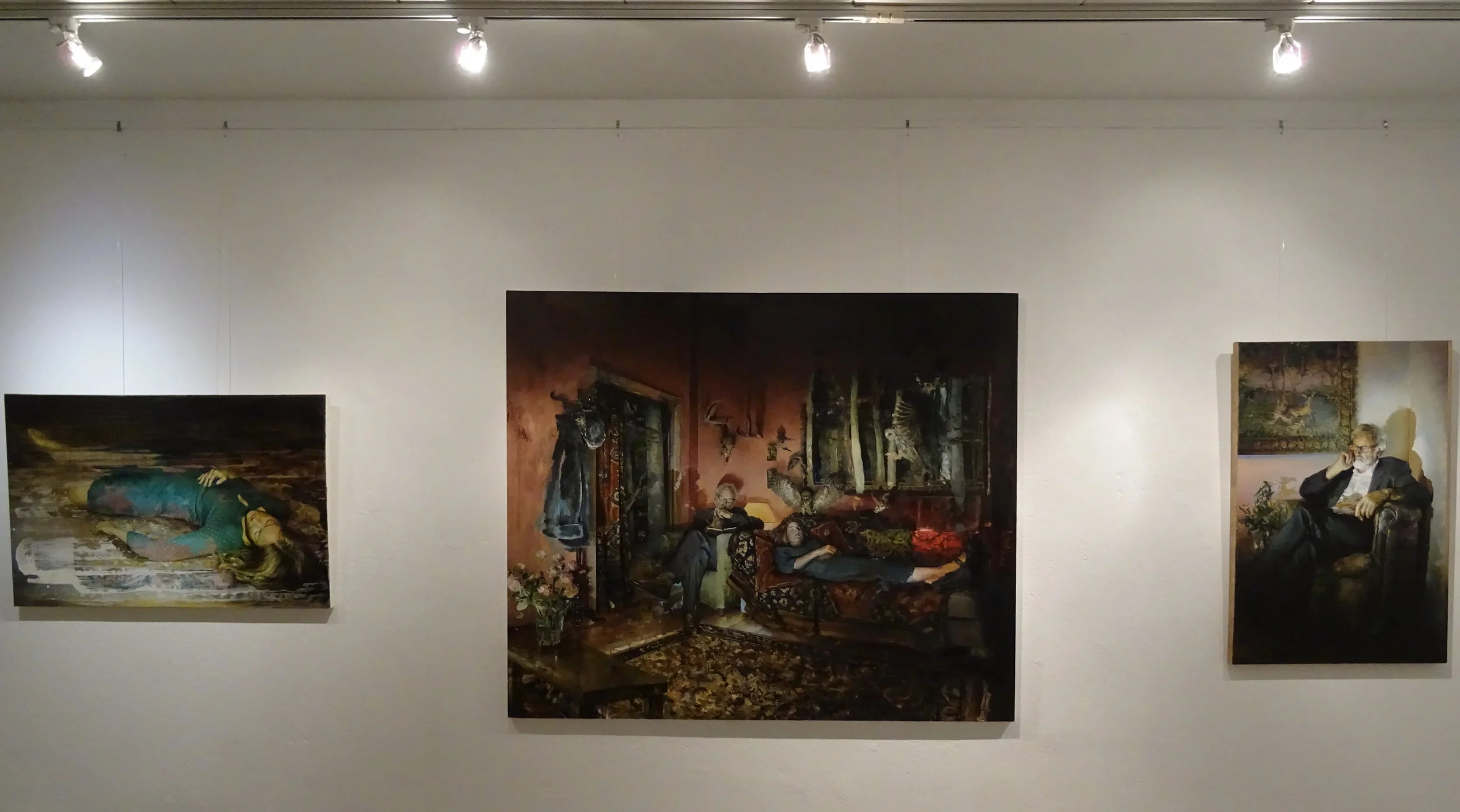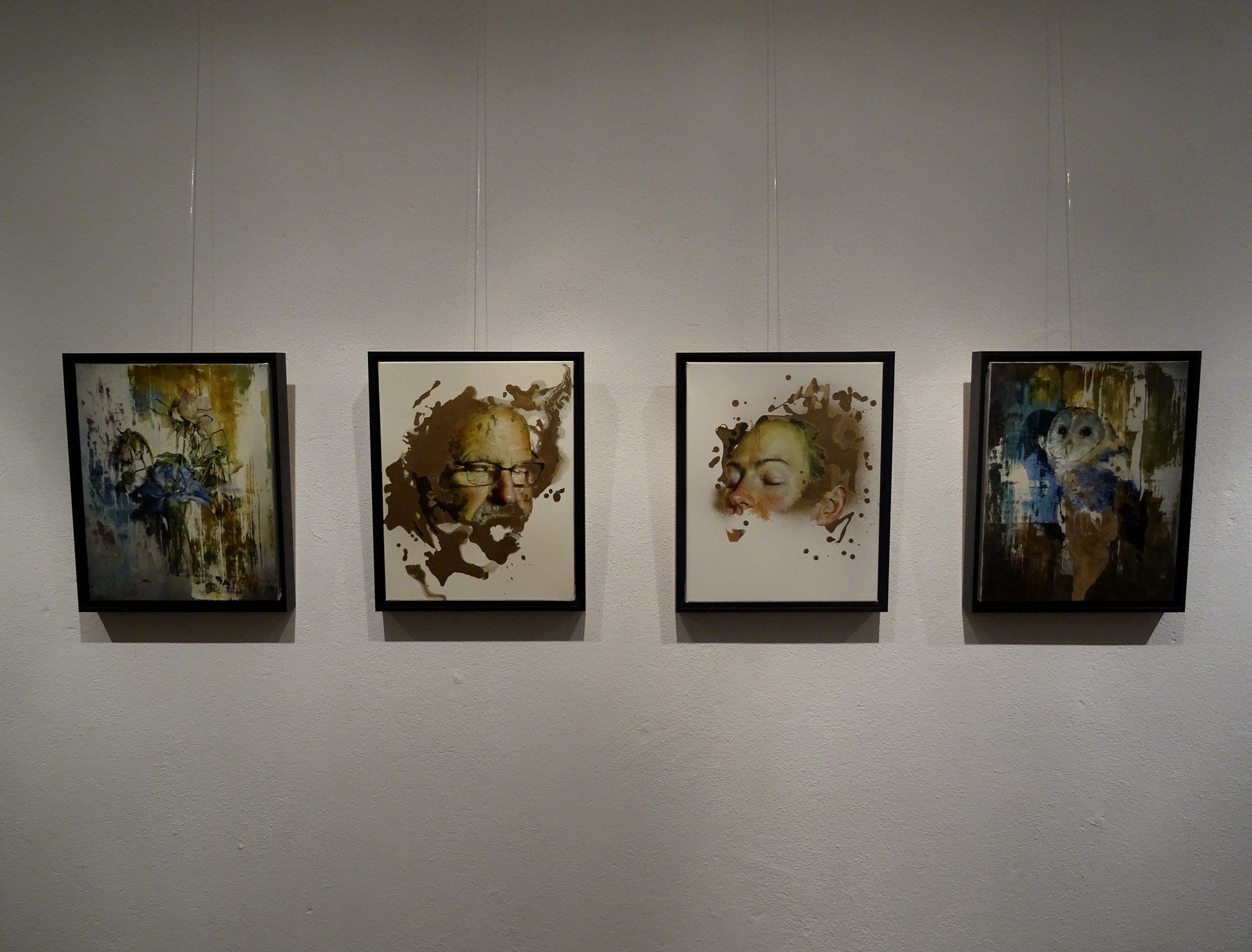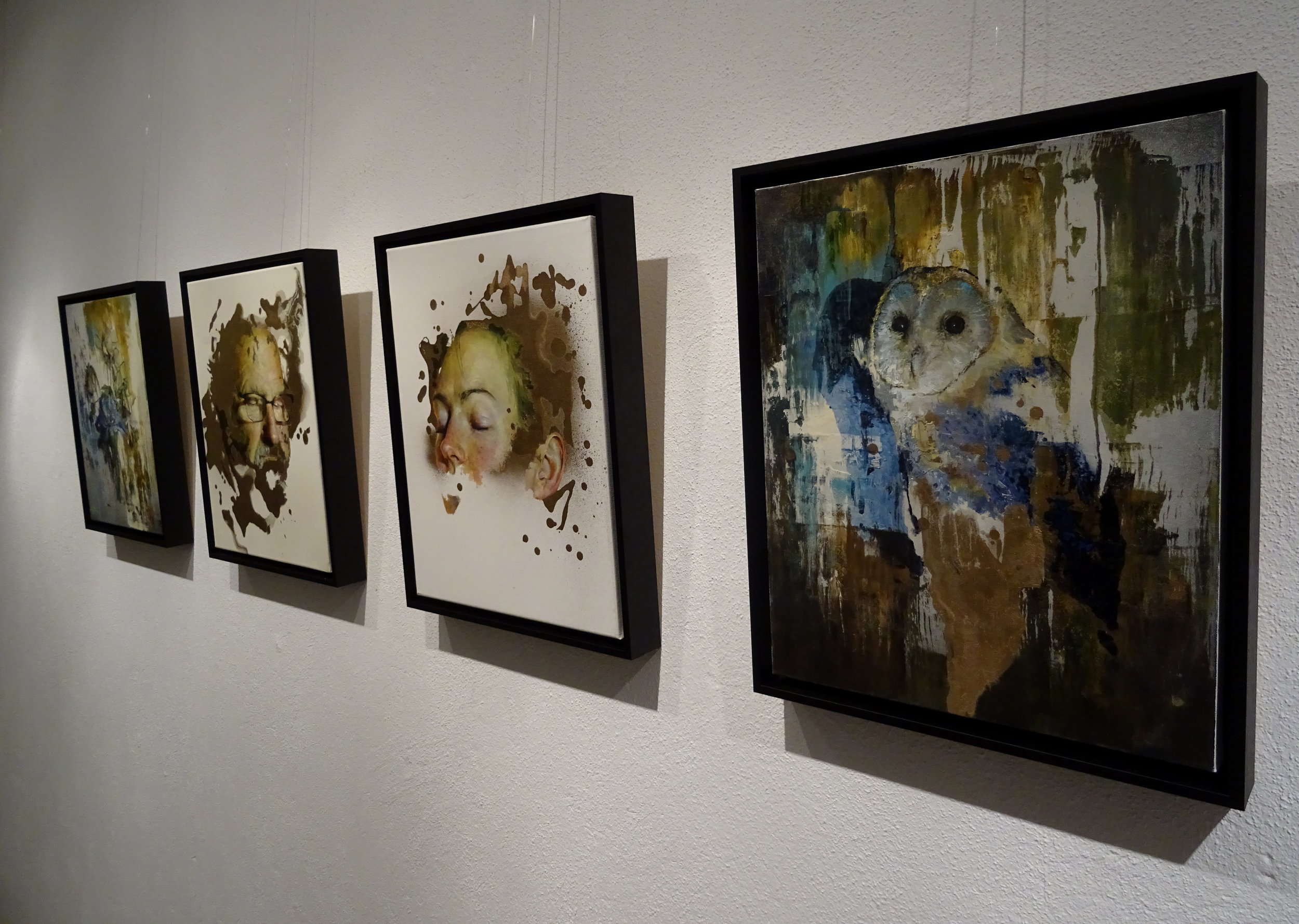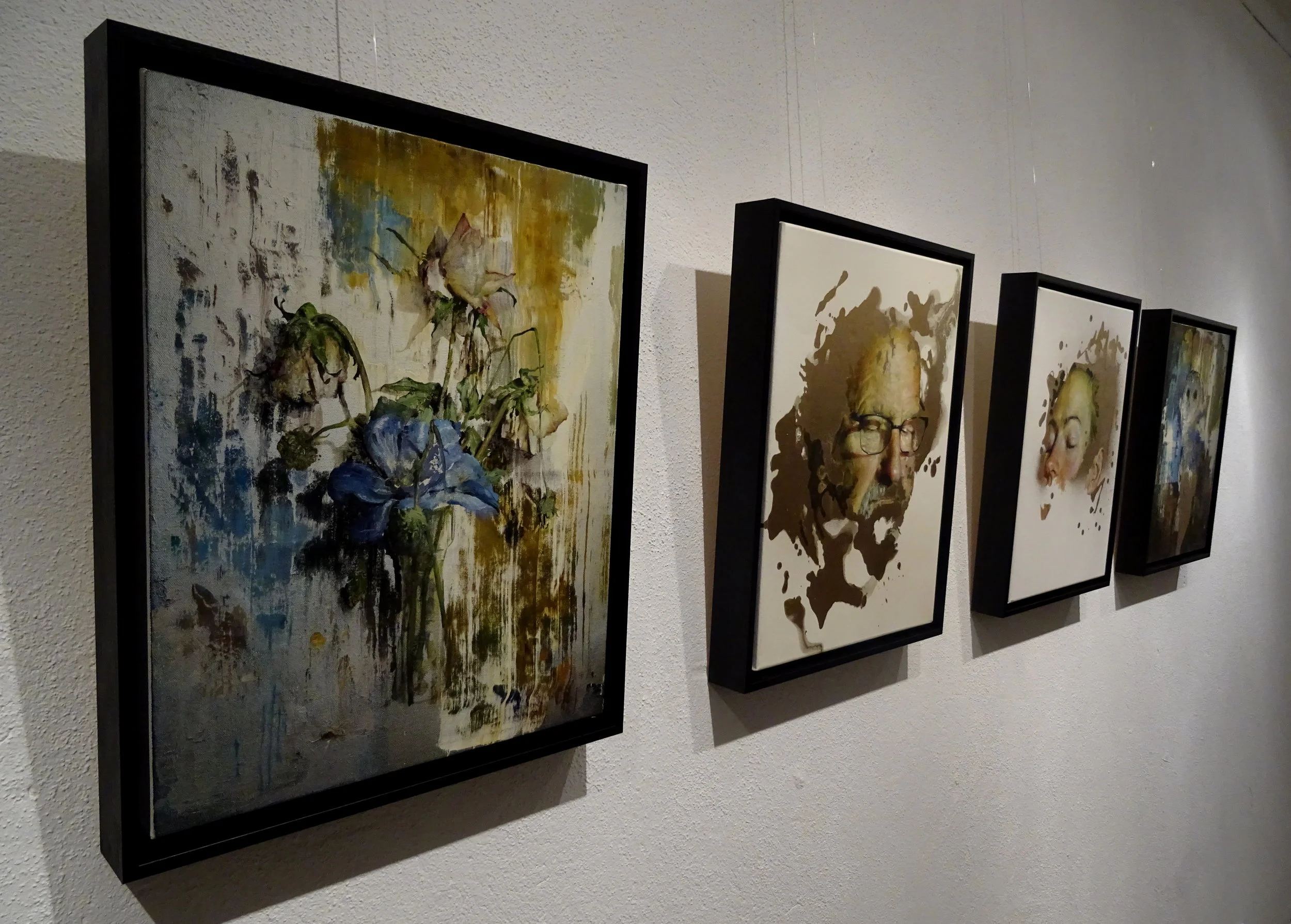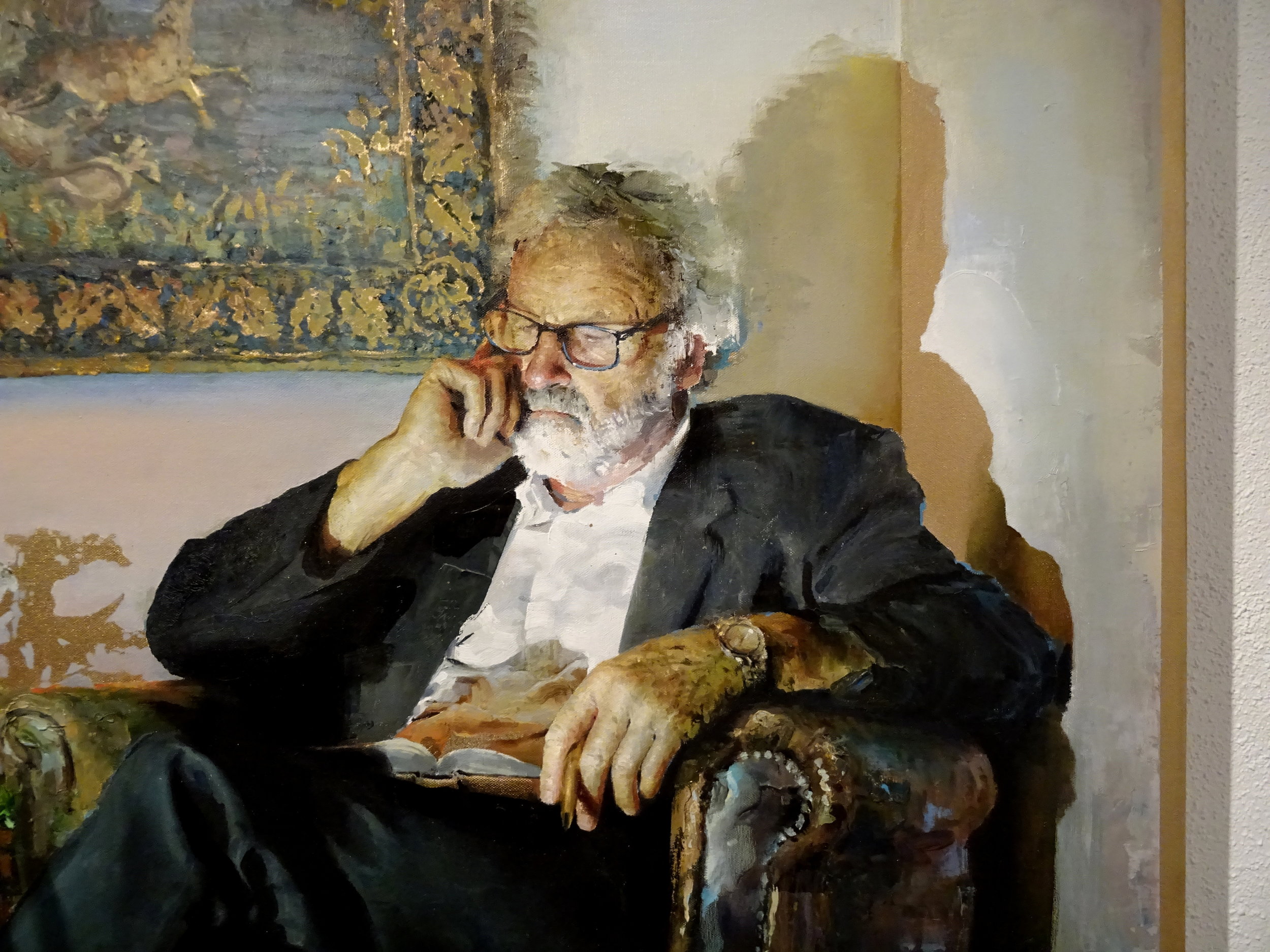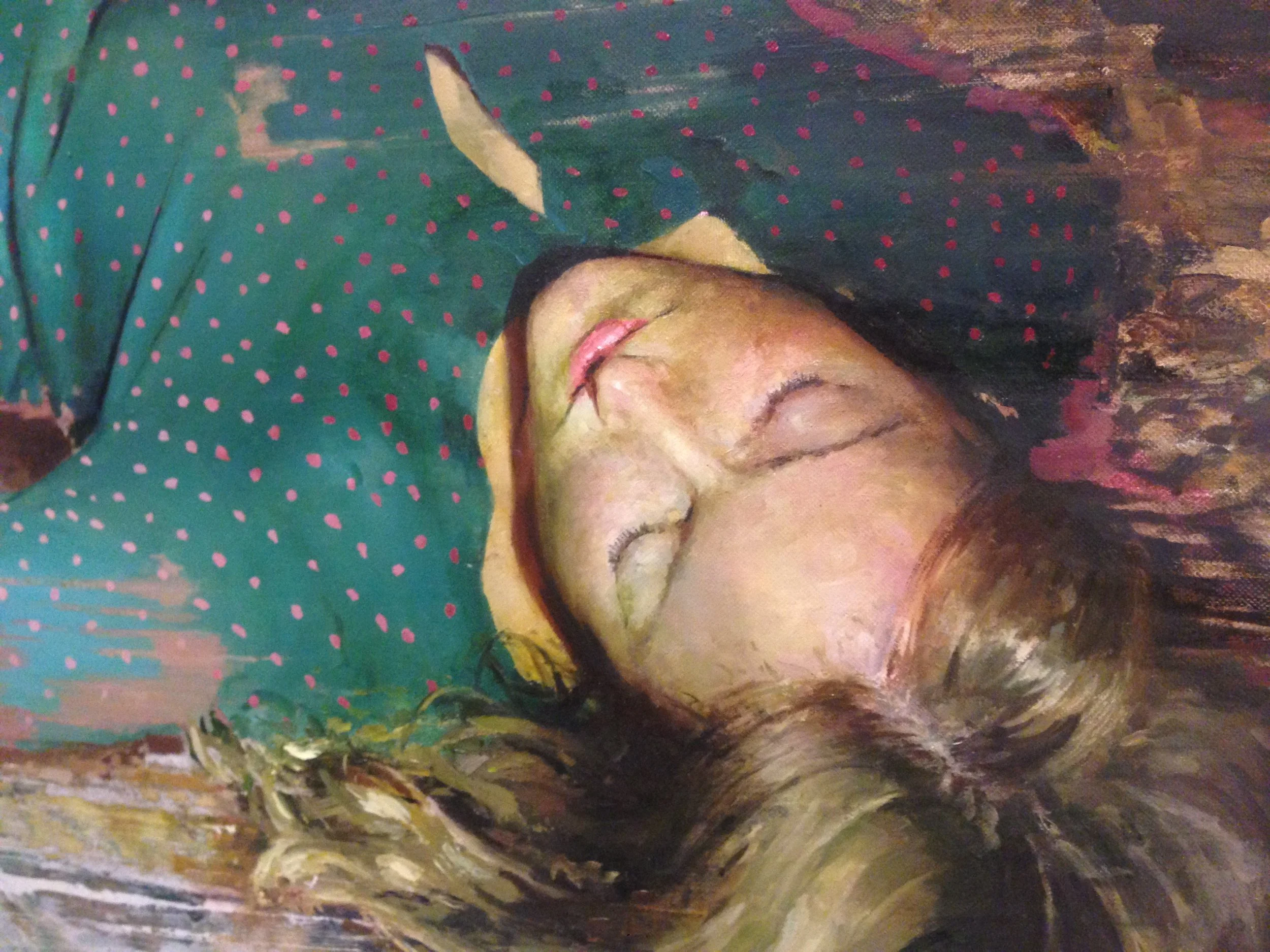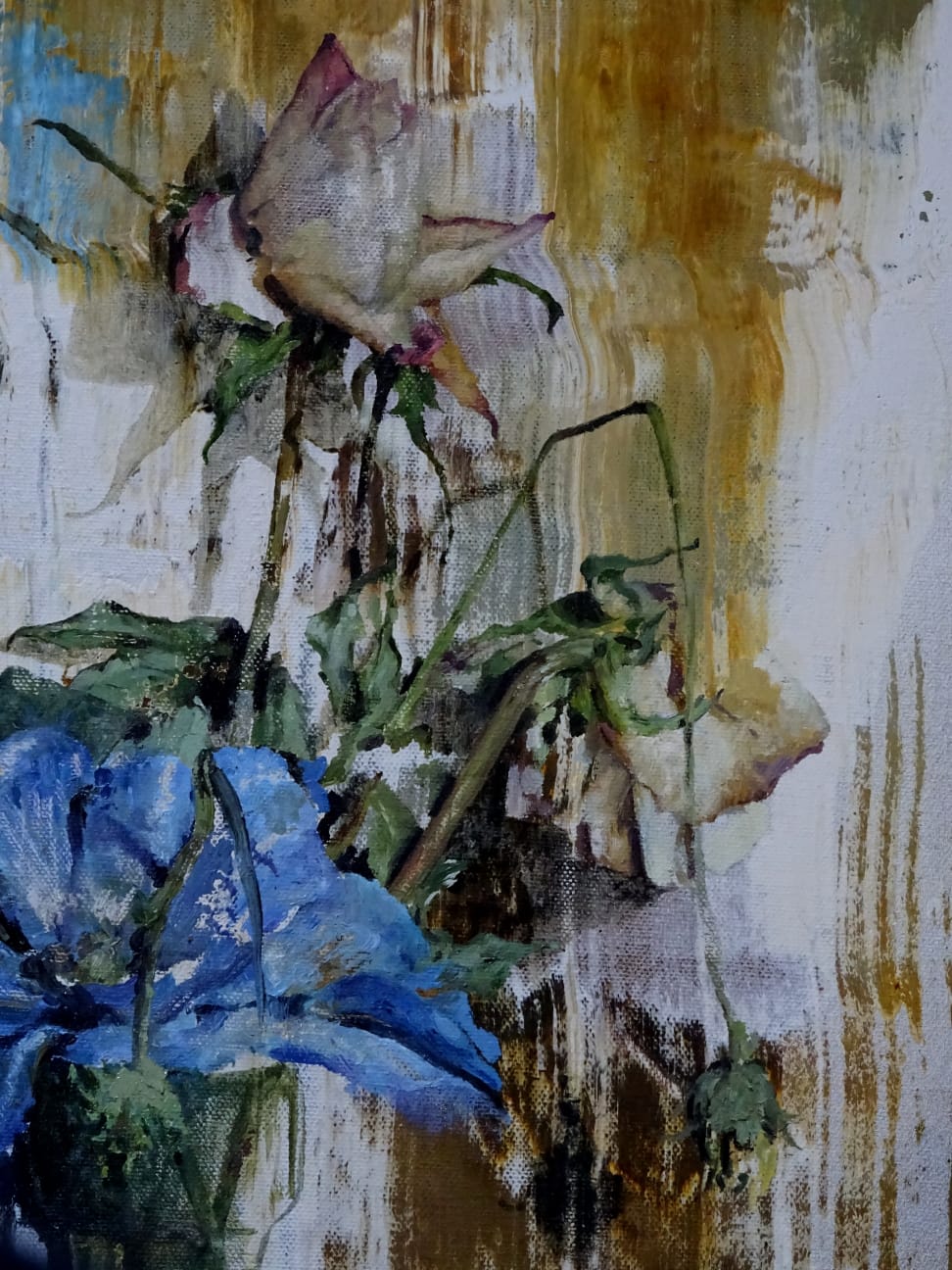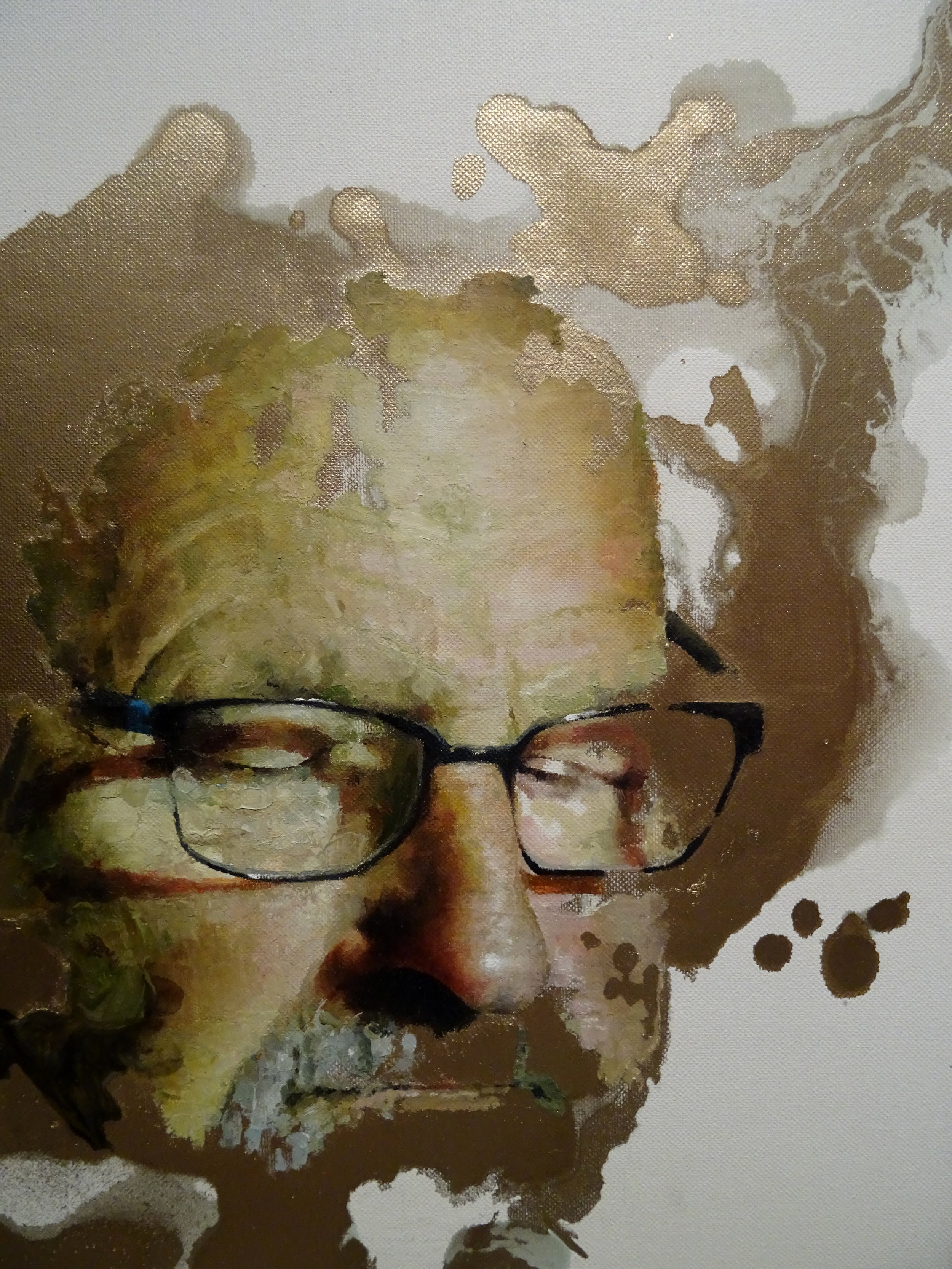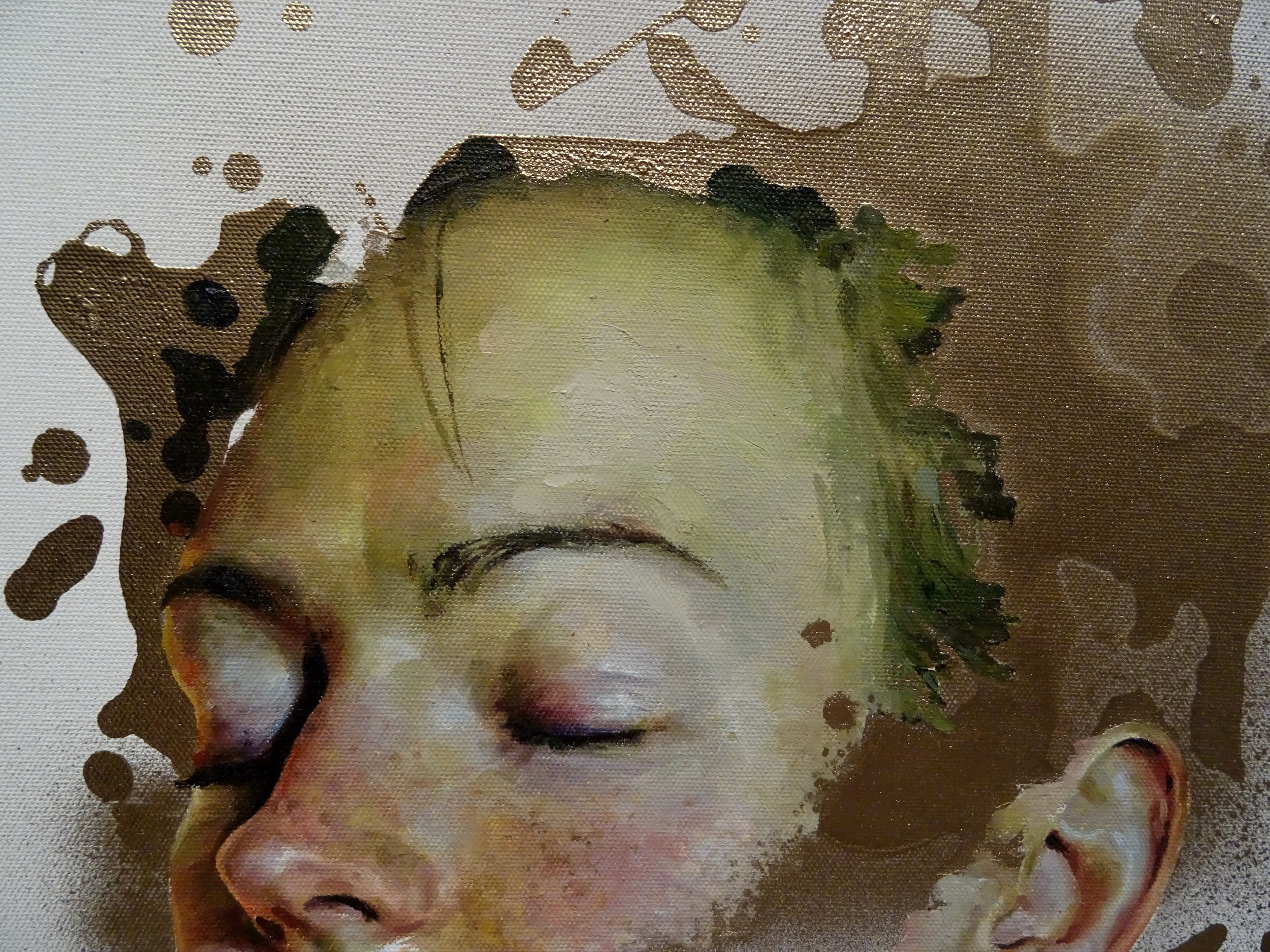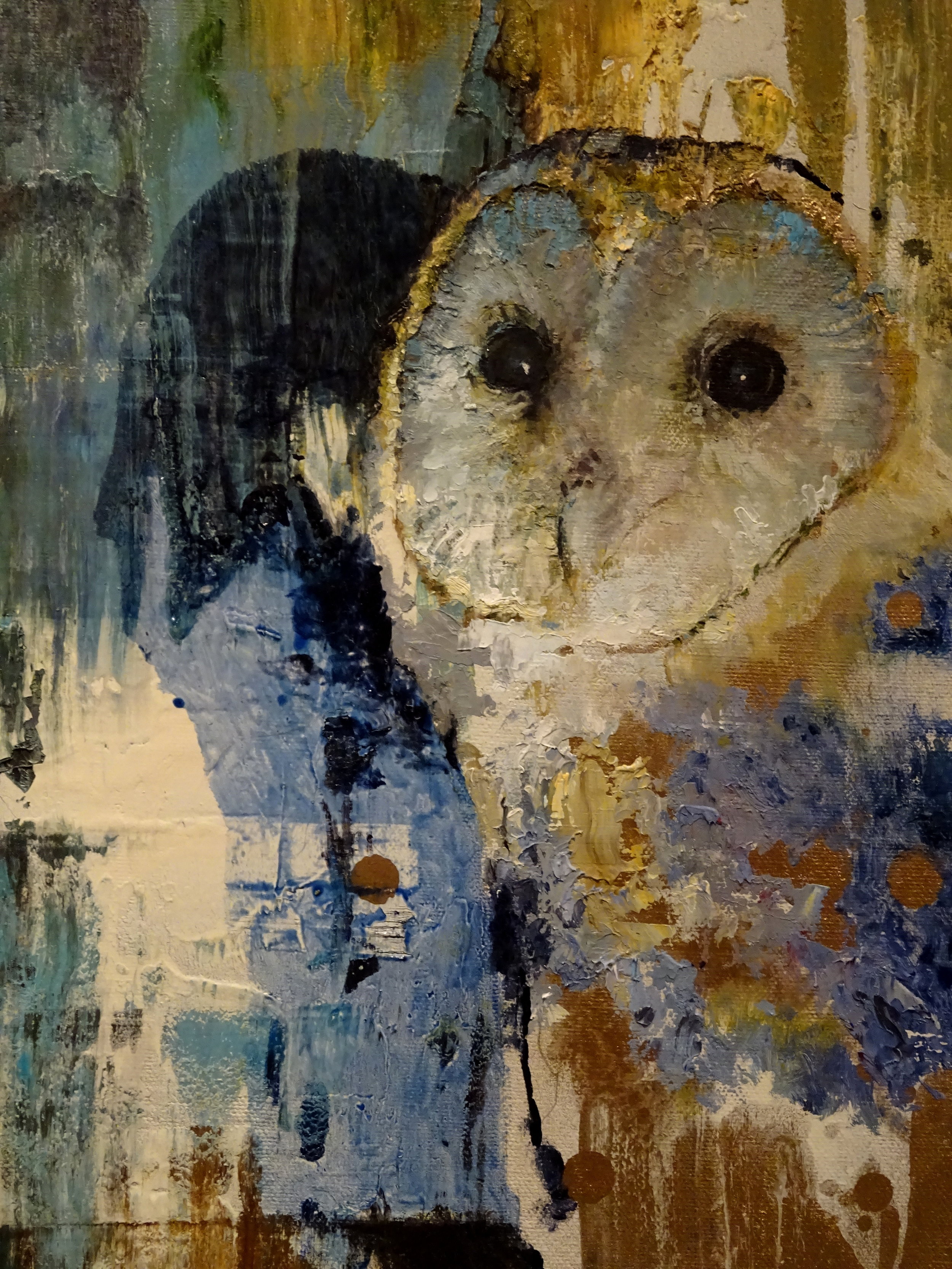Grünewald
The title Grünewald is a tip of the hat to Berlin's Grunewald forest, home of the German Expressionist Brücke Museum, where the concepts for this collection first came together. Seasoned viewers of Switzer's paintings will see themes familiar from previous works. However, here in the Grünewald series, we get a widescreen elaboration. Seen through a Hitchcockian lens, we encounter these narrative spaces as if unseen observers - witness to an exchange of ideas and motifs jostling for the final word.
In Stockholm Suburbs we are greeted, in the immediate foreground, with a fallen figure, although the manner in which she lies might be more suggestive of a spill. Her liquescent pose takes its cue from the German expressionist choreographer Mary Wigman, in particular from her piece Sommertanz, which ends in an autumnal faltering of leafy descent.
However, this paradoxical sense of frozen motion has its origins in a more macabre field. According to Switzer, the painting's original conception began with a curiosity about crime scene photography of the early 20th century. Wherein, the victims, under the harsh flashbulbs of the time, appear as if suspended between two conflicting states; one lifeless and remote, the other abundant and gestural, like the final moments of a violent dance. Likewise, we find our character occupying a similarly uncanny space, feverishly restful in Vesuvian slumber.
The hard angles and vertical lines of Doctor in Repose appear as a dramatic counterargument against the sense of abandon found within the meandering qualities of Stockholm Suburbs.
The depiction of this apparently erudite figure, whose constitution is reminiscent of turn of the century portraiture, seems to pay homage to the more austere components of Jugendstil design. Here too are echoes of Egon Schiele's early paintings, particularly Portrait of the painter Anton Peschka.
Yet, interrupting the scene's atmosphere of rational composure - evoked through cool blue tones - are brief moments of erratic departure. The yellows and golds of the shadows violently pierce the blues, adding a sense of disquiet and foreboding. Taking influence from German expressionist cinema, with its use of strong shadows, Switzer seems to be hinting at the concept of the 'Jungian shadow', which, like Freud's 'id', is the primitive, irrational facet of the self that remains suppressed to the 'unconscious' in civilised adulthood.
Finally we have Grünewald, the largest work of the series and very much the centerpiece. It could be seen as the synthesis of the three works and perhaps the arena where all conflicting motifs struggle to find coalescence.
Caught somewhere between a fairytale and a fever dream, we find our female character placed at the centre of a dialogue that spans the length of human consciousness. The fleshy reds of the interior provide a womb-like comfort that contrasts with the damp, lichen greens that threaten the sanctity of the space.
The room itself toys with the cliché of the Freudian consulting room, with overt references to the chaotic decor found therein. In the painting, however, the leaf and floral design patterns of the Kashmir rugs metamorphose into their organic counterparts. Likewise, we find the female character in a similar state of gestation, teetering between worlds. Whether these worlds are places of shadow or effulgence is uncertain. It too is unclear whether she is being summoned or if she is, perhaps, the architect.
While we can't claim any certainties about Grünewald and the fate of its subjects, discrete hints, like the landscape format, may disclose certain sentiments about its orientation, both physical and psychological.
